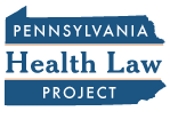CMS Posts Tentative List of Essential Community Providers
The Centers for Medicare & Medicaid Services has posted on its web site a draft list of essential community providers for 2018.
 To qualify as essential community providers, organizations must serve predominantly low-income, medically underserved patients. Qualified health plans must contract with at least 30 percent of the essential community providers in their markets and must offer contracts in good faith to at least one such provider in each of six categories, including federally qualified health centers, hospitals, and family planning providers.
To qualify as essential community providers, organizations must serve predominantly low-income, medically underserved patients. Qualified health plans must contract with at least 30 percent of the essential community providers in their markets and must offer contracts in good faith to at least one such provider in each of six categories, including federally qualified health centers, hospitals, and family planning providers.
Providers that believe they have mistakenly been excluded from the list may petition for inclusion.
Find the draft list here.



 The state Health Department has created a web site for the program that includes FAQs about how the PDMP works for those who prescribe and dispense controlled substances. Visit that web site
The state Health Department has created a web site for the program that includes FAQs about how the PDMP works for those who prescribe and dispense controlled substances. Visit that web site  The centers are funded in part by state behavioral health funds, in part by state Medicaid funds, and in part by federal Medicaid matching funds.
The centers are funded in part by state behavioral health funds, in part by state Medicaid funds, and in part by federal Medicaid matching funds. The report, prepared by the organization Catalyst for Payment Reform, seeks to
The report, prepared by the organization Catalyst for Payment Reform, seeks to

 Included in this edition are stories about the unexpected rebidding of HealthChoices contracts for Medicaid-covered physical health services; passage of the state’s fiscal year 2017 budget; access for Medicaid beneficiaries to drugs to treat hepatitis C; the creation by the state legislature of a task force to explore barriers to access to treatment for substance abuse; and more.
Included in this edition are stories about the unexpected rebidding of HealthChoices contracts for Medicaid-covered physical health services; passage of the state’s fiscal year 2017 budget; access for Medicaid beneficiaries to drugs to treat hepatitis C; the creation by the state legislature of a task force to explore barriers to access to treatment for substance abuse; and more.